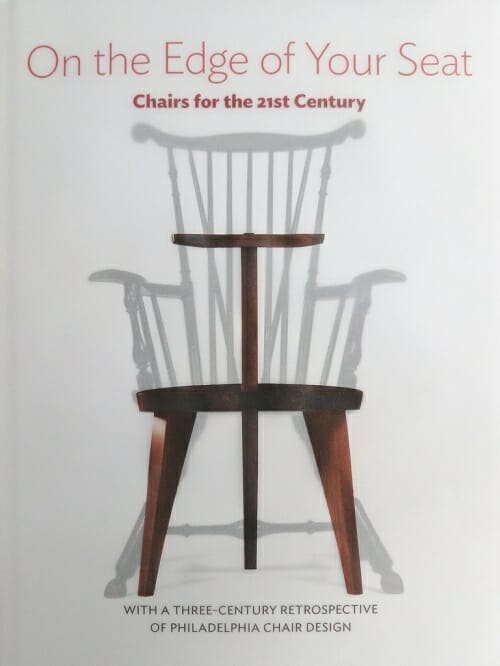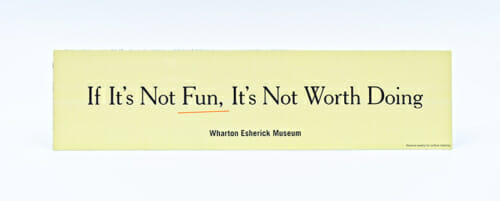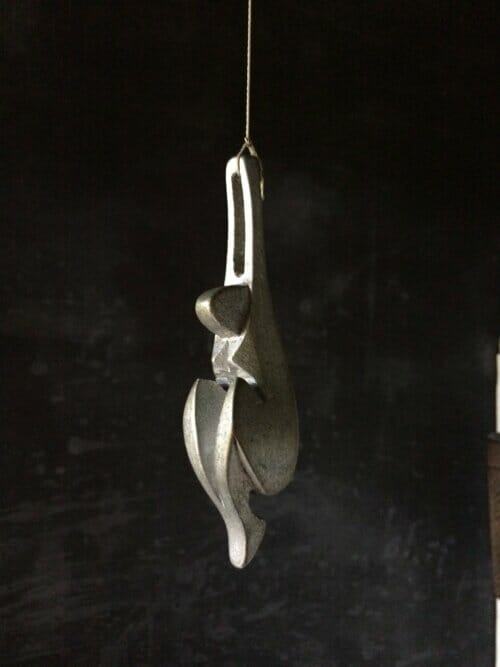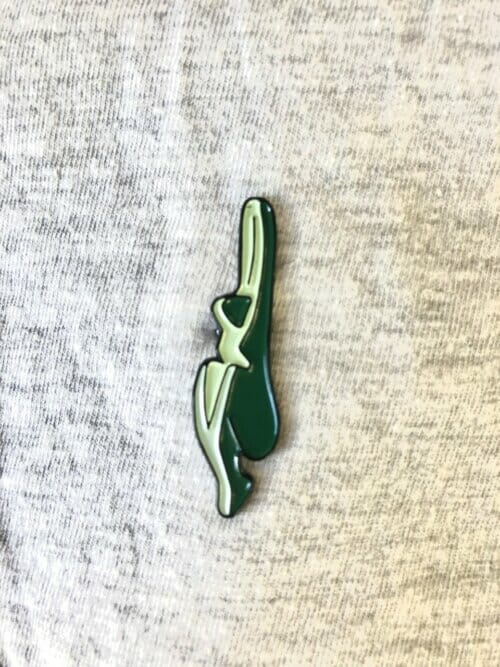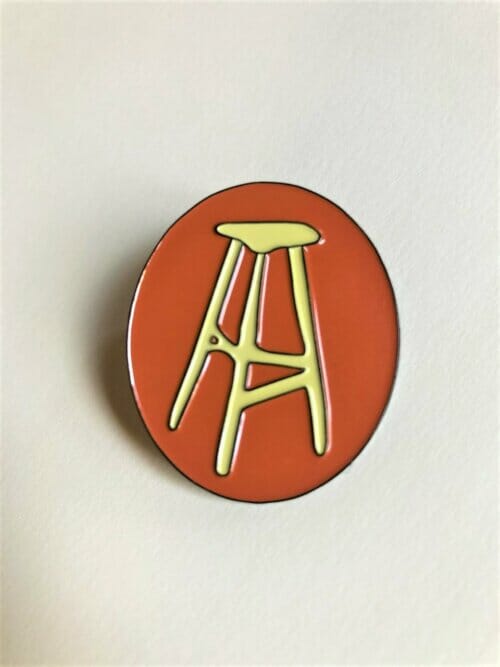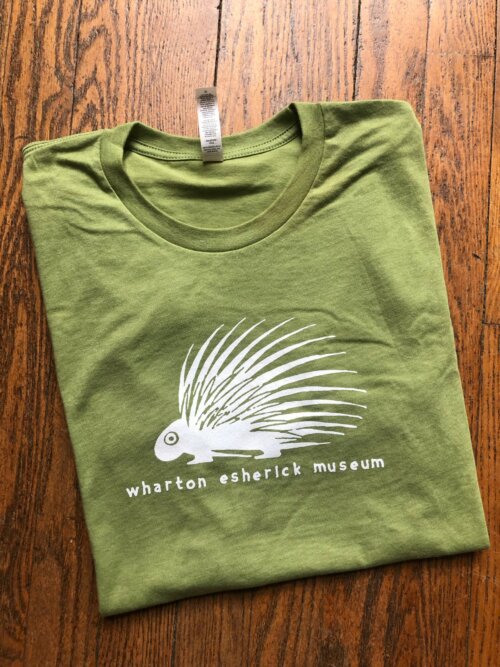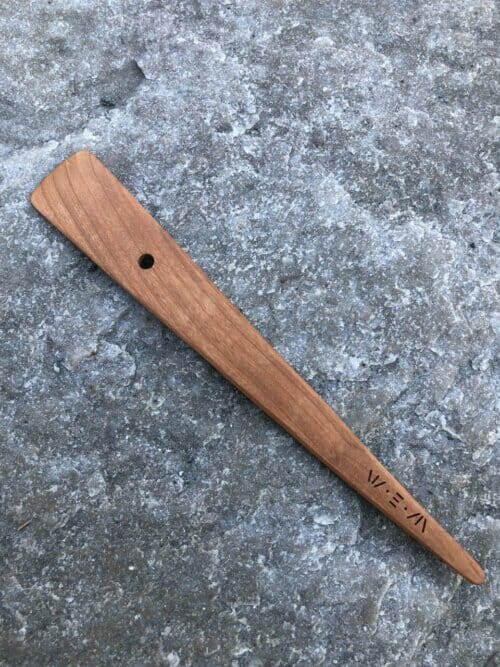-
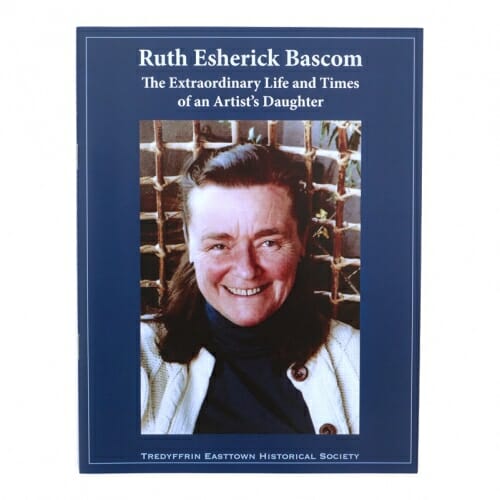 The Society was very pleased to have the opportunity to collaborate with Bob Bascom and the Wharton Esherick Society staff in the production of this special publication and celebrates the life of a truly remarkable woman, and shares some of the stories from her lifelong relationship with her beloved husband, their family, and the community.
The Society was very pleased to have the opportunity to collaborate with Bob Bascom and the Wharton Esherick Society staff in the production of this special publication and celebrates the life of a truly remarkable woman, and shares some of the stories from her lifelong relationship with her beloved husband, their family, and the community. -
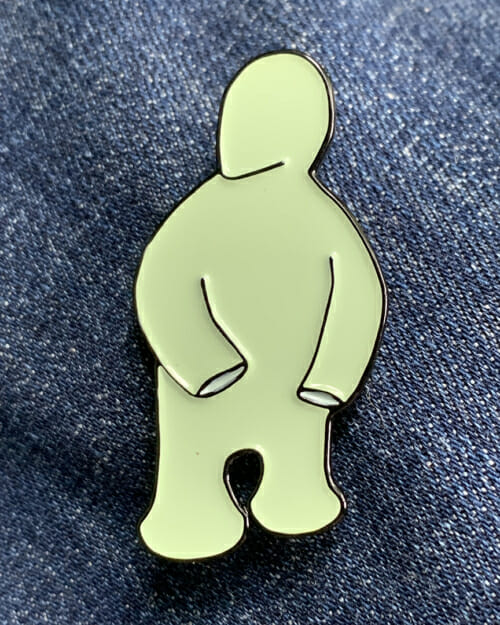 Looking for the perfect addition to your workshop overalls? How about our "Winnie" Enamel Pin! This playful interpretation of Esherick's 1930 "Winnie the Pooh" sculpture -- who greets visitors to the Museum at our Visitor Center and on the Studio deck -- measures 1" x 1.5" and provides a perfect little reminder to stay inspired no matter what you're working on.
Looking for the perfect addition to your workshop overalls? How about our "Winnie" Enamel Pin! This playful interpretation of Esherick's 1930 "Winnie the Pooh" sculpture -- who greets visitors to the Museum at our Visitor Center and on the Studio deck -- measures 1" x 1.5" and provides a perfect little reminder to stay inspired no matter what you're working on. -
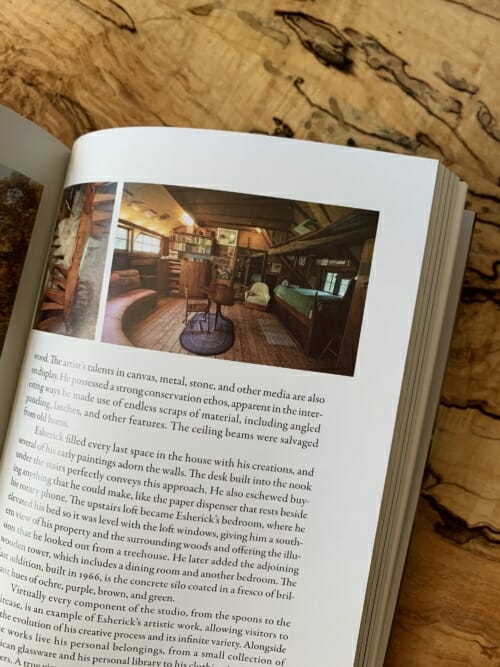
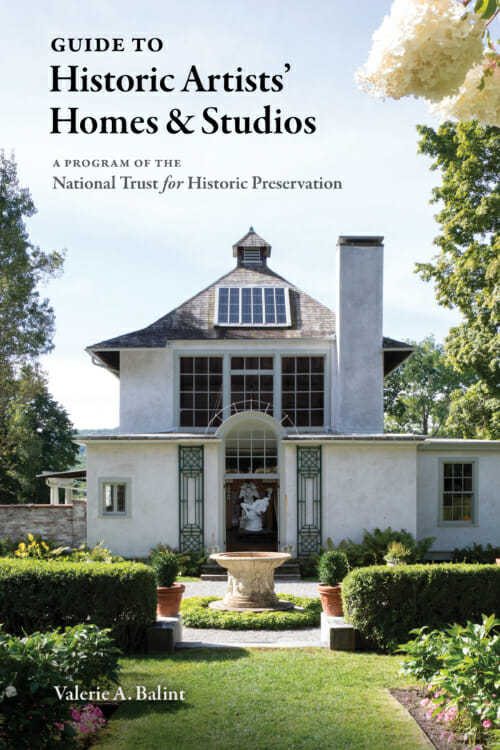
Established in 1999, Historic Artists’ Homes and Studios (HAHS), a program of the National Trust for Historic Preservation, is a coalition of museums throughout the country that were the homes and studios of American artists. From the desert vistas of Georgia O’Keeffe’s New Mexico ranch to Winslow Homer’s studio on the rocky, windswept coast of southern Maine, the homes and studios in the network are sites of extraordinary creativity. The Wharton Esherick Museum is proud to be a founding HAHS member, and a site featured in this publication.
Guide to Historic Artists’ Homes & Studios is the first guidebook to the network, conveying each artist’s visual legacy and setting each site in the context of its architecture and landscape, which often were designed by the artists themselves. Through portraits, artwork, and site photos, discover the powerful influence of place on American greats such as Andrew Wyeth, Grant Wood, Lee Krasner, and Donald Judd, as well as lesser-known but equally creative figures who made important contributions to cultural history---multimedia artist James Castle, photographer Alice Austen, and muralist Clementine Hunter among them.
Organized by region Guide to Historic Artists’ Homes & Studios weaves the history of the sites’ architecture and landscape with the artists’ biographies and their visual legacy. The guide features portraits of the artists, examples of their artwork, site descriptions, and photographs as well as visitor information and a site map.
Guide to Historic Artists’ Homes & Studios: A Program of the National Trust for Historic PreservationBy Valerie A. Balint | Foreword by Wanda M. Corn, Preface by Donna Hassler and Katherine Malone-France
Publication date: June 2, 2020. Paperback with flaps. 256 pages. 225 Color & B+W photographs.Cover photo by Don Freeman, 2019
-
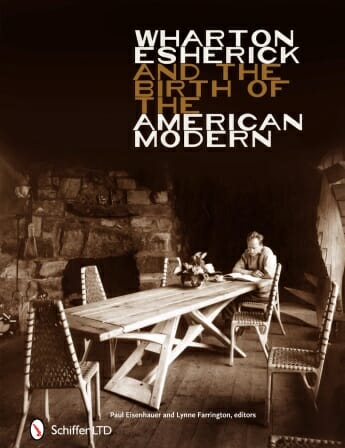 Wharton Esherick and the Birth of the American Modern explores Esherick’s artistic evolution during the early decades of the twentieth century, culminating in the exhibition of his work as part of the Pennsylvania Hill House at the 1940 World's Fair in New York City. Trained as an illustrator and painter, experienced in modern theater and dance, well exposed to new ideas in philosophy, politics, and literature, Esherick experimented with woodcarving and printmaking, laying the foundation for his emergence as an artist of remarkable range.
Wharton Esherick and the Birth of the American Modern explores Esherick’s artistic evolution during the early decades of the twentieth century, culminating in the exhibition of his work as part of the Pennsylvania Hill House at the 1940 World's Fair in New York City. Trained as an illustrator and painter, experienced in modern theater and dance, well exposed to new ideas in philosophy, politics, and literature, Esherick experimented with woodcarving and printmaking, laying the foundation for his emergence as an artist of remarkable range. -
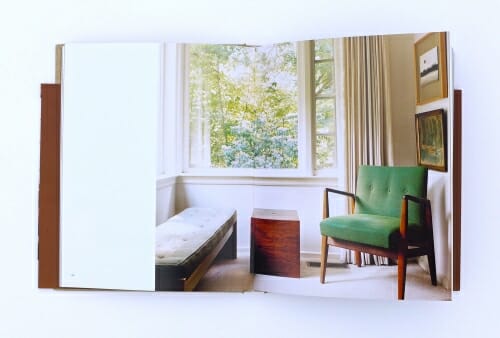
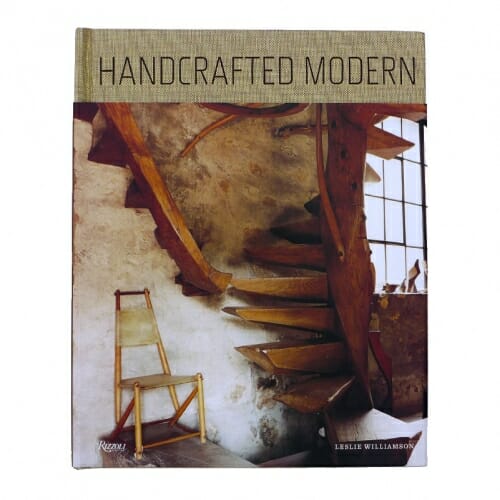 An intimate and revealing collection of photographs of astonishingly beautiful, iconic, and undiscovered mid-century interiors. Among significant mid-century interiors, none are more celebrated yet underpublished as the homes created by architects and interior designers for themselves. This collection of newly commissioned photographs presents the most compelling homes by influential mid-century designers, such as Russel Wright, George Nakashima, Harry Bertoia, Charles and Ray Eames, and Eva Zeisel, among others. Intimate as well as revelatory, Williamson’s photographs show these creative homes as they were lived in by their designers: Walter Gropius’s historic Bauhaus home in Massachusetts; Albert Frey’s floating modernist aerie on a Palm Springs rock outcropping; Wharton Esherick’s completely handmade Pennsylvania house, from the organic handcarved staircase to the iconic furniture. Personal and breathtaking by turn—these homes are exemplary studies of domestic modernism at its warmest and most creative.
An intimate and revealing collection of photographs of astonishingly beautiful, iconic, and undiscovered mid-century interiors. Among significant mid-century interiors, none are more celebrated yet underpublished as the homes created by architects and interior designers for themselves. This collection of newly commissioned photographs presents the most compelling homes by influential mid-century designers, such as Russel Wright, George Nakashima, Harry Bertoia, Charles and Ray Eames, and Eva Zeisel, among others. Intimate as well as revelatory, Williamson’s photographs show these creative homes as they were lived in by their designers: Walter Gropius’s historic Bauhaus home in Massachusetts; Albert Frey’s floating modernist aerie on a Palm Springs rock outcropping; Wharton Esherick’s completely handmade Pennsylvania house, from the organic handcarved staircase to the iconic furniture. Personal and breathtaking by turn—these homes are exemplary studies of domestic modernism at its warmest and most creative. -
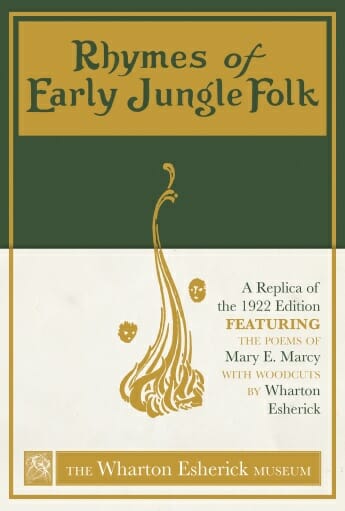 This facsimile edition of a 1922 children’s book features seventy-three dynamic and whimsical woodcut illustrations—the first woodcuts that the famed American craftsman Wharton Esherick produced. A high-quality replica authorized by the Wharton Esherick Museum, this book reveals the foundation of Esherick’s direction as an artist. Edited by Museum director Paul Eisenhauer, it also features a foreword by Museum assistant curator Laura Heemer. The illustrations frame verses that introduce children to the principles of evolution, a highly controversial topic at the time: the book was published three years before the famous Scopes “Monkey” trial of 1925 that resulted in the inclusion of the teaching of evolution in public schools. Drawn by the excitement of the controversy, Esherick threw his passion into these illustrations. Afterward he would go on to carve over 300 woodcuts, leading to decorative carving, and ultimately, to Esherick’s realization that he was a sculptor rather than a painter.
This facsimile edition of a 1922 children’s book features seventy-three dynamic and whimsical woodcut illustrations—the first woodcuts that the famed American craftsman Wharton Esherick produced. A high-quality replica authorized by the Wharton Esherick Museum, this book reveals the foundation of Esherick’s direction as an artist. Edited by Museum director Paul Eisenhauer, it also features a foreword by Museum assistant curator Laura Heemer. The illustrations frame verses that introduce children to the principles of evolution, a highly controversial topic at the time: the book was published three years before the famous Scopes “Monkey” trial of 1925 that resulted in the inclusion of the teaching of evolution in public schools. Drawn by the excitement of the controversy, Esherick threw his passion into these illustrations. Afterward he would go on to carve over 300 woodcuts, leading to decorative carving, and ultimately, to Esherick’s realization that he was a sculptor rather than a painter.

